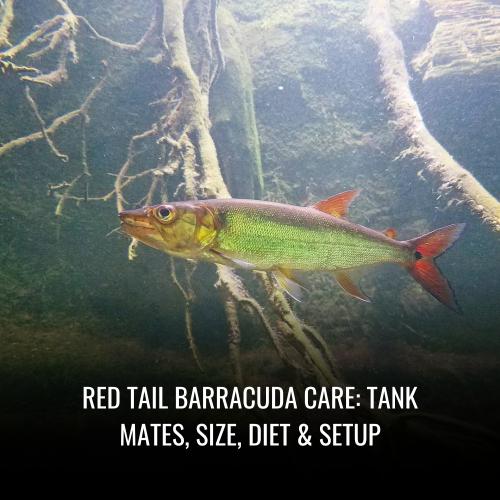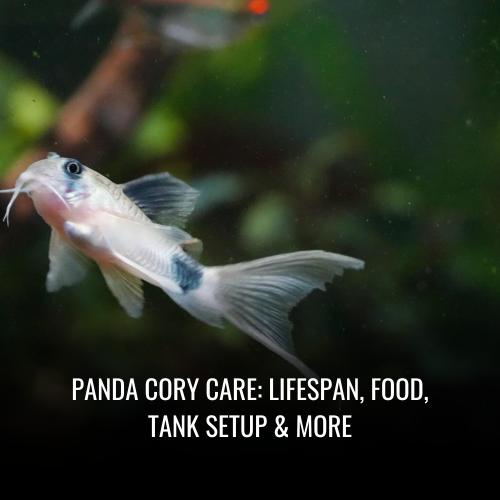The Bandit Corydoras are praised for their serene nature and compatibility with a plethora of nano aquarium inhabitants, including other tranquil fish and invertebrates. Bandit Corydoras are nocturnal feeders and thrive when kept in small groups.
Below is a table outlining critical care specifics for the Bandit Corydoras:
| Attribute | Details |
|---|---|
| Scientific Name | Corydoras metal |
| Common Name | Bandit Cory |
| Family | Callichthyidae |
| Usual Size in Tanks | 5-6 cm (2-2.4 inches) |
| pH Range | 6.0 – 7.0 |
| Water Hardness (dGH) | 2 – 18°N |
| Temperature | 22 – 26°C (72 – 79°F) |
| Reproduction | Egg layer |
| Origin | Colombia, Rio Meta |
| Temperament to Own | Peaceful |
| Temperament to Others | Very Peaceful |
| Tank Placement | Bottom dweller |
| Lifespan | Up to 5 years |
| Tank Size Requirement | 20 gallons (minimum) |
| Filtration System | Required, with gentle flow |
| Sexual Dimorphism | Females fuller-bodied |
| Substrate Cleaning | Yes, will sift through the sand |
Scientific Name
The study of Corydoras species in the aquarium hobby is facilitated by their scientific names, which are crafted in Latinized form to enable universal understanding and identification. For instance, Corydoras panda, commonly known as the Panda Cory, features characteristics that resonate with its playful name, reminiscent of the panda bear’s black and white patterning. Similarly, the name Corydoras aeneus, also known as the Bronze Cory, reflects its metallic brown hues.
Average Size
Corydoras, popular in the aquarium hobby, exhibit considerable size variation across species. For those looking to create a peaceful community aquarium, knowing the average sizes of these gentle bottom dwellers is important for tank planning and maintenance.
The Bandit or Metae Cory (Corydoras metae) grows to an average adult size of 1.6 to 2 inches, or 4 to 5 centimeters. Enthusiasts can typically find them at a purchase size of about 1 inch, or 2.5 centimeters, making them a manageable addition to aquariums.
Another beloved Corydoras, the Panda Cory (Corydoras panda), reaches a modest 2 inches or 5 centimeters in length, with a life span that can delight owners for up to 10 years, given excellent water quality and care.
| Species | Average Adult Size | Purchase Size | Notable Feature |
|---|---|---|---|
| Bandit/Metae Cory | 4-5 cm (1.6-2 in) | 2.5 cm (1 in) | — |
| Panda Cory | 5 cm (2 in) | — | Longevity up to 10 years |
| Bronze Cory | 6 cm (2.36 in) | — | Available in all-white |
| False Bandit Cory | 5-6 cm (1.97-2.36 in) | — | Often confused with Bandit Cory |
With this size information, a hobbyist can create a nurturing environment with the right combination of dense planting, substrate, and tank size to allow these Corydoras species to thrive.
Lifespan
Catfish enthusiasts often gravitate towards Corydoras species for their charismatic behavior and manageable size. Not only do they add interest to the tank, but with proper care, they can also grace their owners with several years of companionship.
The Bandit Corydoras, known scientifically as Corydoras metae, and the similarly patterned False Bandit Cory (Corydoras melini), boast lifespans ranging from 3 to 5 years. This duration can be maximized with excellent water quality and a nutritious diet consisting of quality flake foods, sinking pellets, plant matter, and occasional live or frozen offerings such as baby brine shrimp or larger shrimp varieties.
A brief overview of catfish lifespans:
| Species | Average Lifespan |
|---|---|
| Bandit Corydoras | 3-5 years |
| False Bandit Cory | 3-5 years |
| Pictus Catfish | 4-8 years |
| Upside-Down Catfish | Several years |
Providing a balanced diet and impeccable tank conditions are key to ensuring these captivating fish lead full and healthy lives.
Natural Habitat
The allure of the Bandit Corydoras (Corydoras metae) extends beyond the tranquil views of our aquarium glass to the flowing waters of the Meta River Basin in Colombia. Here, in South America, lies the exclusive home of these charming fish, gamboling under a canopy of expansive biodiversity.
Intricately tied to their surroundings, Bandit Corydoras thrive amidst the crystal-clear currents of whitewater streams. Nature has carpeted their domain with a fine layer of sand—a must-have for their well-being. This sandy substrate isn’t merely a choice but a crucial element for their behavioral rituals and ecological functions.
Adaptability is a hallmark of the Bandit Corydoras, well-suited to the distinct conditions of the Meta River Basin. Their existence underscores the delicate balance of this aquatic network, proving their importance to the ecosystem’s vitality.
| Key Attributes | Bandit Corydoras’ Habitat |
|---|---|
| Location | Meta River Basin, Colombia |
| Water Type | Crystal-clear, rapidly flowing |
| Substrate | Sandy |
| Diet | Omnivorous (plant & small fauna) |
| Importance to Ecosystem | Ecological balance maintenance |
Appearance
The beguiling charm of Bandit Corydoras (Corydoras metae) is not only rooted in their species but also shaped by various factors such as mood, age, gender, and social hierarchy. Therefore, it’s crucial to understand that these fish may display a range of appearances. Patrons of the aquarium hobby need to note that transporting these delicate creatures can be somewhat stressful, and it is not uncommon for them to lose some vibrancy in coloration, arriving at your door with muted tones.
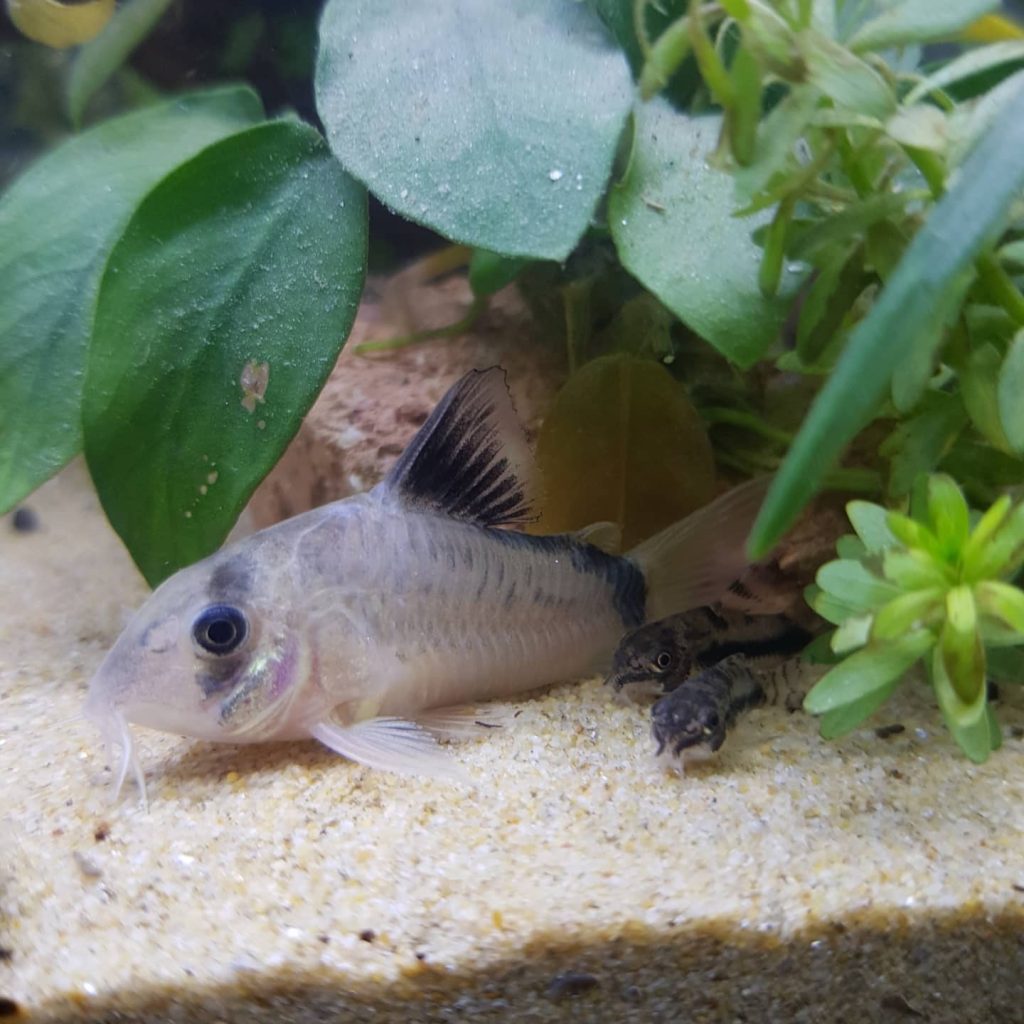
Enthusiasts are advised to thoroughly research the phases and faces of the bandit corys to set realistic expectations. Images on a seller’s webpage might depict the idealized, mature coloration or the understated juvenile phase and are not definitive guides to individual deliveries. If uncertainty lingers, reaching out to the seller via email for detailed insights is a prudent step to ensure clarity regarding their appearance upon arrival.
| Age Stage | Appearance |
|---|---|
| Juvenile | Less vibrant or different colors |
| Adult | Full color, distinctive patterns |
| Transported | Faded coloration due to shipping stress |
- Research thoroughly on Corydoras metae.
- Note color changes due to stress.
- Females and males differ in appearance.
- Juveniles have less color.
- Always confirm with the seller if unsure.
Behavior & Temperament
Bandit Corydoras, known for their peaceful demeanor, are excellent inhabitants of a community aquarium. These charming fish are bottom-dwellers, showing no aggressive fin-nipping behavior. Not only do they coexist harmoniously with fellow Corydoras, but they are also very compatible with a wide array of other nano aquarium residents.
Their tranquil nature makes them an ideal match for fish that prefer a serene environment such as Dwarf Cichlids, Tetras, and small Gouramis.
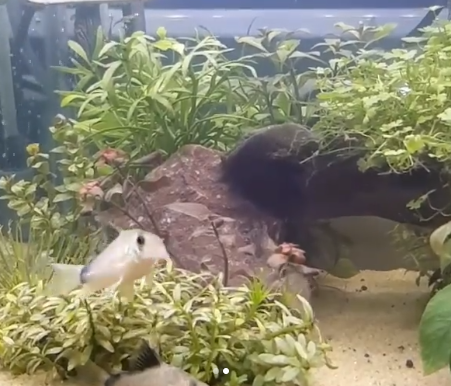
Are Bandit Corydoras Fin Nippers?
Bandit Corydoras exudes a friendly persona, never engaging in fin-nipping. These amiable creatures glide along the aquarium glass, busy with their world of scavenging, presenting no threat to their tank mates. With their peaceful interactions, they contribute to maintaining the tranquil ambiance of a community aquarium setting.
Are Bandit Corydoras Aggressive to Each Other & Other Fish?
Among their kind and within the community tank, Bandit Corydoras exemplifies docility. They are not known to show aggression towards each other or other tank inhabitants. Their nocturnal feeding habits may make them less visible during the day, but rest assured these gentle scavengers are simply sticking to their natural routines.
Are Bandit Corydoras Friendly to Each Other & Other Fish?
Indeed, Bandit Corydoras are friendly not only to their species but also to others, making them superb candidates for a peaceful community aquarium. They have a harmonious rapport with many of the hobby’s popular fish and are respectful of their tank mates’ space. Larger shrimp and ornamental invertebrates can also share their environment without fear of predation.
Are Bandit Corydoras Schooling Fish?
One of the standout traits of Bandit Corydoras is their schooling behavior. They thrive in a group setting, displaying active and engaging behaviors when surrounded by their conspecifics. A well-planted tank with dense planting creates an idyllic backdrop for observing their social interactions.
Can You Have Just One Bandit Corydoras in The Tank?
While a single Bandit Corydoras can survive in a tank, it is not an ideal situation. This species’ social nature means they are significantly happier and more active when in the company of their own. Isolated individuals may exhibit signs of stress, such as decreased activity or excessive hiding.
Do Bandit Corydoras Need To Be In Groups?
To ensure the well-being of Bandit Corydoras, it is advisable to keep them in groups. A minimum cluster of at least five is recommended to foster their natural shoaling behavior. In their native habitat, the Rio Meta in Colombia, they are found in large gatherings, and replicating this dynamic in the home aquarium encourages a healthy and vibrant life for these delightful fish.
| Social Requirement | Minimum Group Size | Preferred Tankmates | Behavior |
|---|---|---|---|
| Schooling Fish | 5 | Dwarf Cichlids, Tetras | Active, social, peaceful |
| Gouramis, Catfish | Non-aggressive, nocturnal feeder |
Food & Diet
Bandit Corydoras, known scientifically as Corydoras metae, display an omnivorous feeding behavior that spans both plant and meaty foods, ensuring a balanced diet is crucial for their health.
In the wild, their scavenger nature has them feasting on worms, benthic crustaceans, and other organic detritus found on the riverbed. Consequently, their diet in captivity should reflect this diversity to keep them thriving.

Do Bandit Corydoras Eat Algae?
While Bandit Corydoras scavenge for a variety of foodstuffs, their consumption of algae is minimal. They are not considered effective algae eaters, and relying on them to clean the aquarium glass of algae is not wise.
Supplementing their diet with foods designed for bottom dwellers, such as algae wafers, can help provide the nutritional variety they need, along with high-quality dry foods, meaty foods like bloodworms and daphnia, and occasional vegetable matter.
Do Bandit Corydoras Eat Shrimp?
Bandit Corydoras, being omnivorous, can mistakenly consume small shrimp, especially if they are part of the natural detritus within an aquarium. Although not regular predators of larger shrimp, care should be taken in a community tank to ensure the safety of ornamental shrimp species. It’s great to include a mix of live, frozen, and pellet foods in their diet to satisfy their carnivorous side.
Do Bandit Corydoras Eat Bloodworms?
Bloodworms can be a delicious treat for Bandit Corydoras, but they should be offered sparingly and not as a primary diet. Overreliance on bloodworms could lead to digestive issues.
To maintain excellent water quality and avoid health problems, only feed an amount they can consume within a few minutes and remove any uneaten food from the tank promptly. Blanched vegetables further ensure dietary balance and mimic their natural intake.
Do Bandit Corydoras Eat Mosquito Larvae?
Yes, mosquito larvae are a natural and nutritious food source for Bandit Corydoras, having been part of their diet in the wild. They are an excellent addition to a varied diet that can also include flake foods and pellets.
Consideration should be given to the frequency and quantity of mosquito larvae served to avoid overfeeding and the potential water quality issues that can arise from it.
Do Bandit Corydoras Eat Planaria?
Planaria, along with other small benthic organisms, are part of the natural diet of Bandit Corydoras. In the aquarium setting, they may consume them if present, but it is not advisable to specifically introduce planaria as they can become a nuisance.
A diverse diet that includes specialized sinking foods for bottom feeders, along with supplemental meaty and plant-based snacks, is key for their health.
Do Bandit Corydoras Eat Plants?
While Bandit Corydoras do not specifically eat live plants, they benefit from the inclusion of plant matter in their diet. Blanched vegetables, such as spinach, broccoli, and zucchini, can provide essential nutrients and variety. Feeding these types of foods complements their natural diet and contributes to balanced nutrition in the aquarium setting.
Maintaining a varied diet that reflects the natural scavenger behavior of Bandit Corydoras is paramount for their well-being. By alternating between high-quality dry foods, live, frozen, and pellet options, along with the occasional plant matter, aquarists can ensure their Bandit Corys remain healthy and active members of a peaceful community aquarium.
Sexing: Male vs Female
Identifying the sex of False bandit corys, known as Corydoras metae, can be somewhat challenging due to the subtle differences between males and females. Visual cues become more apparent as these fish reach maturity.
| Characteristic | Male | Female |
|---|---|---|
| Size | Smaller and slender | Larger and rounder |
| Shape | More streamlined body | Noticeably plumper appearance |
| Reproductive Role | Fertilizes eggs | Lays sticky eggs on surfaces |
When observing False Bandit stories, the females exhibit a plumper and rounder shape, particularly visible from a top-down view. This distinction is especially noticeable during the breeding phase, where size differences are accentuated.
Males remain comparatively slender and are responsible for fertilizing the eggs after they are laid by the females. During spawning, a female will stick her eggs to various surfaces in the aquarium, including plants and the tank glass.
Bandit Corydoras Tank Mates
Bandit Corydoras, recognized for their striking black diagonal stripe extending from the dorsal fin to the caudal peduncle, are prized jewels in the aquarium hobby. Their tranquil nature makes them ideal for a peaceful community aquarium, where they thrive among a variety of compatible tank mates.
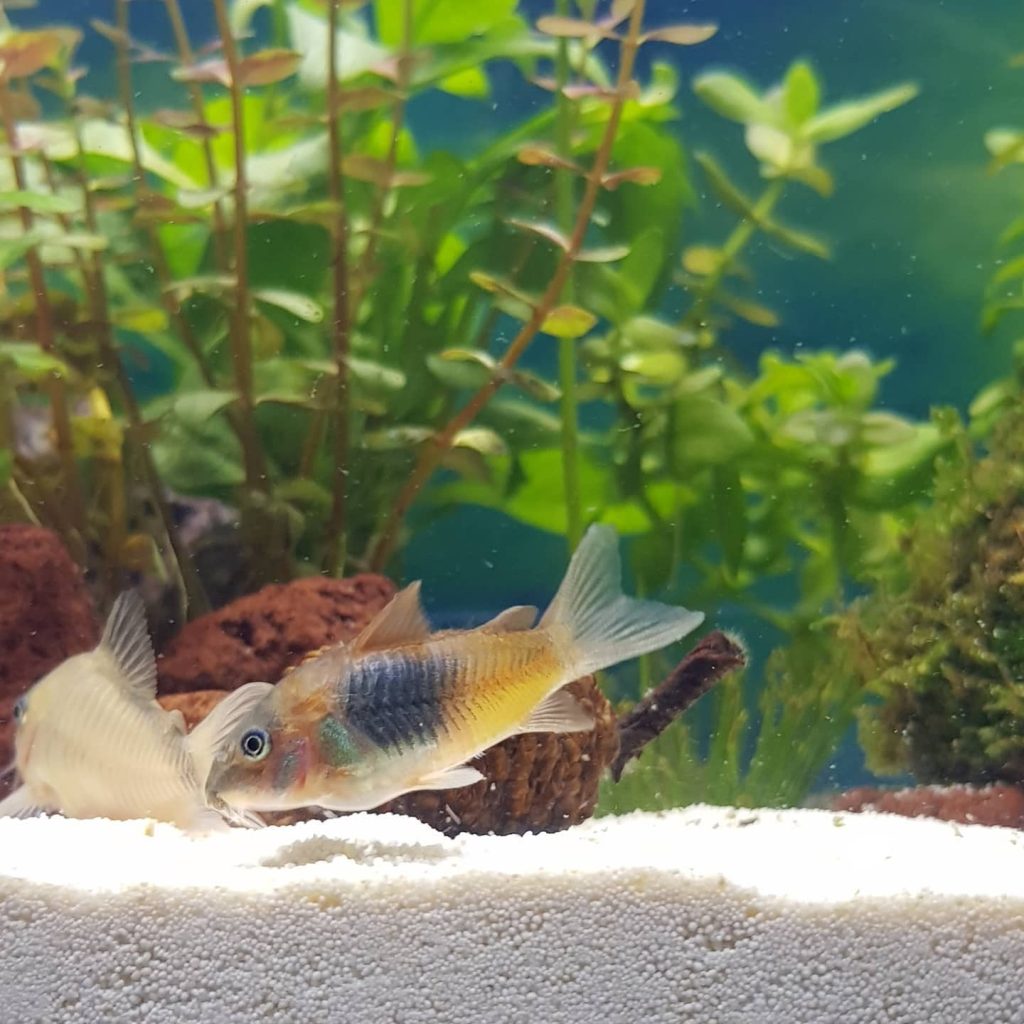
These amicable scavengers are most comfortable when sharing space with non-aggressive fish, hence Dwarf Cichlids, Tetras, and small to medium-sized Barbs are fitting companions. Additionally, peaceful Gouramis and other congenial Catfish can coexist harmoniously with Bandit Corydoras.
While these bottom dwellers may snack on smaller Dwarf Shrimp, they generally do not pose a threat to larger shrimp and ornamental invertebrates, making them safe neighbors for a wide range of aquatic life.
However, it’s wise to steer clear of larger, territorial, or aggressive species that may harass the Bandit Corydoras. To ensure harmony within the tank, here’s a quick reference chart for potential tank mates:
| Ideal Tank Mates | To Avoid |
|---|---|
| Dwarf Cichlids | Aggressive Large Fish |
| Tetras | Predatory Species |
| Small/Medium Barbs | Known Fin Nippers |
| Gouramis | |
| Peaceful Catfish | |
| Larger Shrimp | |
| Smaller Pencilfish | |
| Rasboras |
Creating a community where Bandit Corydoras can socialize without fear is essential for their well-being—maintaining excellent water quality with partial water changes and providing dense planting and a soft layer of sand will support a thriving ecosystem for these charismatic fish and their friends.
Aquarium Setup
Creating a hospitable environment for Bandit Corydoras, scientifically known as Corydoras metae, extends far beyond selecting a tank that merely accommodates their size. These peaceful bottom dwellers hail from the soft, acidic tributaries in Colombia, where the substrate is commonly littered with fallen leaves and the water is teeming with tannins.
To replicate such conditions, a combination of gentle filtration, appropriate lighting, and thoughtful aquascaping is necessary. Let’s delve into the specifics of setting up the perfect home for these charming aquatic creatures.

Ideal Tank Size
Despite their small stature, Bandit Corydoras cherish the freedom to roam and forage, which makes tank size an essential consideration. For a small school of three fish, a 10-gallon tank is the absolute minimum, yet, for the optimal well-being and social interaction of these shoaling fish, a 20 to 30-gallon tank is more suitable. Here’s a quick reference for tank sizes based on group numbers:
| Number of Fish | Minimum Tank Size | Recommended Tank Size |
|---|---|---|
| 3 | 10 gallons | Not recommended |
| 5+ | 30 gallons | Preferred for social dynamic |
Ideal Water Parameters
To ensure your Bandit Corydoras flourish, emulate their natural habitat by maintaining these essential water parameters:
- pH Range: 6.0 – 7.5 to match their natural riverine conditions
- Water Hardness: 5 – 15 degrees of General Hardness (89 – 268.5 ppm)
- Temperature: 68 – 79°F (20 – 26°C), with the sweet spot lying between 71.6 – 75.2°F (22-24°C)
- Total Dissolved Solids: 90 – 215 to ensure cleanliness and appropriate ionic concentration
Filtration
Efficient filtration serves as the backbone of a thriving aquatic ecosystem, particularly for Bandit Corydoras who depend on pristine water conditions. An ideal filtration system should offer moderate water flow and not create currents too strong for these gentle swimmers. Regular maintenance, including the rinsing or replacement of filter media, is paramount in preventing the accumulation of harmful bacteria and detritus.
Lighting
Bandit Corydoras do not have stringent lighting requirements due to their nocturnal nature. Moderate to low lighting levels are sufficient for their day-to-day activities, with plenty of shaded areas providing comfort. Aim to mimic a natural diurnal cycle to support their health and biological rhythms. Too intense lighting could lead to stress, so ensure that your aquarium includes enough refuge spaces that offer respite from brightness.
In conclusion, an aquarium housing Bandit Corydoras should be a well-thought-out replica of the tranquil and shaded riverbeds they’re accustomed to in the wild. With the right sized tank, water conditions, filtration, and lighting, these delightful fish can lead full and happy lives as part of your aquatic family.
Common Possible Diseases & Prevention
Corydoras melini, often referred to as the False Bandit Cory, is a delightful addition to any peaceful community aquarium. However, they are susceptible to common freshwater fish diseases, which aquarists should diligently work to prevent.
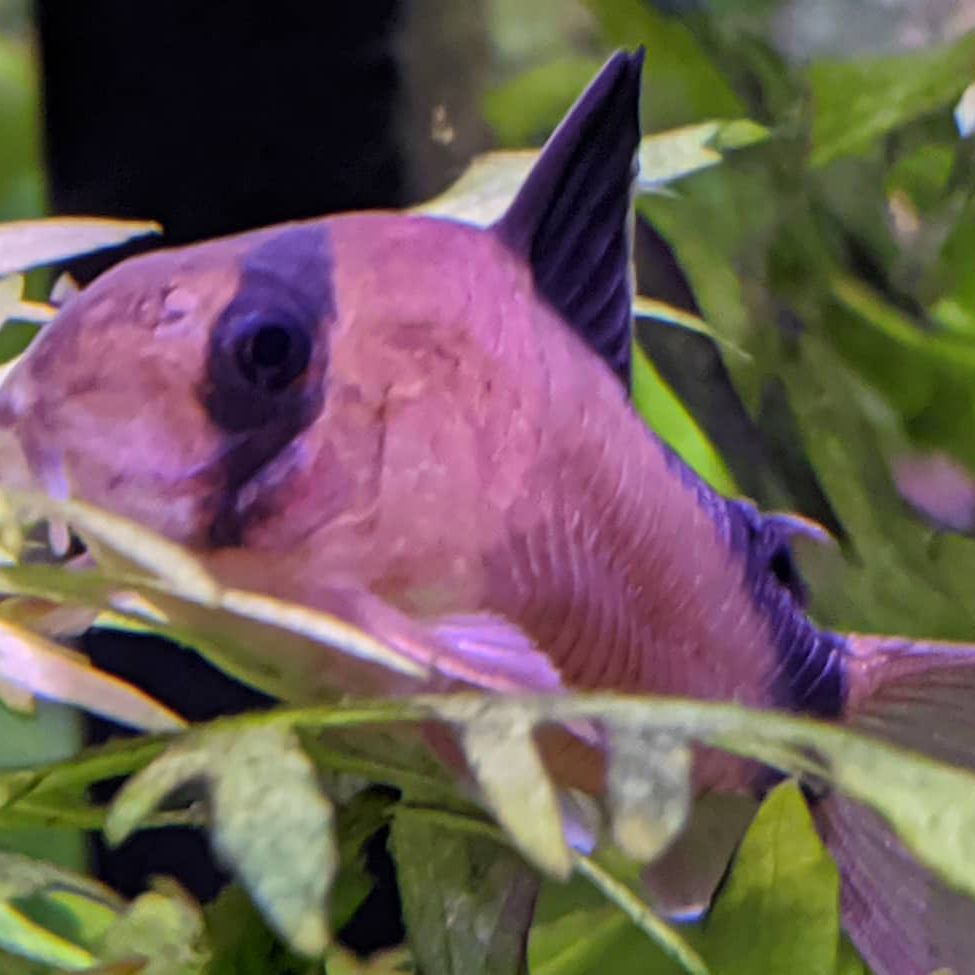
Key Preventative Measures:
- Quality Diet: Provide a balanced diet including live foods like microworms and baby brine shrimp for the fry.
- Regular Tank Maintenance: Consistent cleaning, including partial water changes, prevents harmful build-ups.
- Sand Substrate: A soft layer of sand rather than a bare tank floor supports barbel health and reduces stress.
- Water Quality: Maintaining excellent water conditions with the right pH, hardness, and temperature is critical, especially for delicate fry.
| Parameter | Fry Requirement |
|---|---|
| Water Quality | Excellent |
| Food | Live (Microworms, Baby Brine Shrimp) |
| Substrate | Sand (Thin Layer) |
| Maintenance | Frequent & Regular |
By following these guidelines, you can provide a safe, healthy environment for your Corydoras timeline, ensuring they grow and thrive disease-free.
Breeding Bandit Corydoras in Aquarium
Breeding Bandit Corydoras, also known as Corydoras metae, is an exciting endeavor for any aquarium hobbyist. To optimize chances of success, setting up a dedicated spawning tank is a must; aim for a ratio of two or more males for every female to encourage mating behaviors.
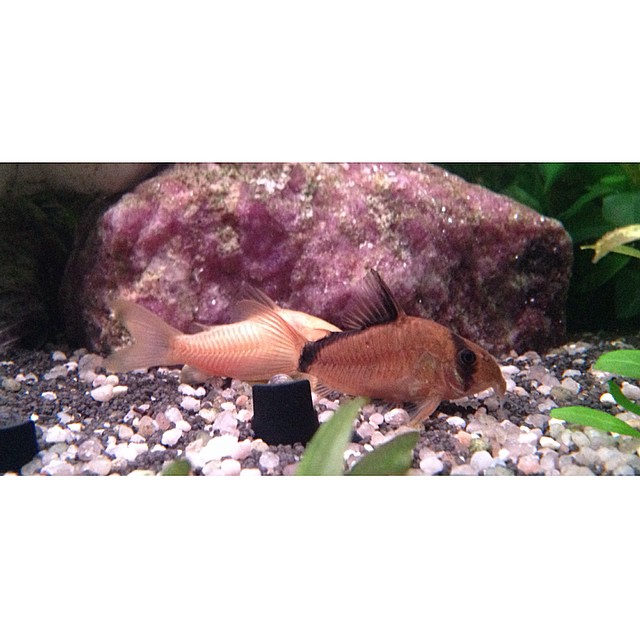
To stimulate the breeding process, a significant water change is imperative. Replace 50 to 70 percent of the tank water with cooler water while also increasing the oxygenation and water flow. This change in environment is akin to the natural signals that instigate spawning in the wild.
Bandit stories have a particular preference for depositing their eggs, favoring the aquarium glass, nestled within fine-leafed plants, or tucked into submerged spawning mops. Post-spawning, it is crucial to either relocate the adults or the eggs to prevent predation.
For the best outcome, maintain egg safety. The application of methylene blue prevents fungal infections, ensuring higher hatch rates. Below is a summarized table of the breeding steps:
| Step | Action |
|---|---|
| Tank Setup | In separate breeding tank, males outnumber females |
| Water Change | 50-70% with cooler water, increase oxygen and flow |
| Egg Placement | On tank glass, fine-leaved plants, or spawning mops |
| Post-Spawning | Remove adults or eggs |
| Egg Care | Use methylene blue for protection against fungus |
By adhering to these steps, you can look forward to the pitter-patter of tiny fins as your Bandit corydoras multiply.

